Master the Inverted Row for Back Muscles That Will Block Out the Sun
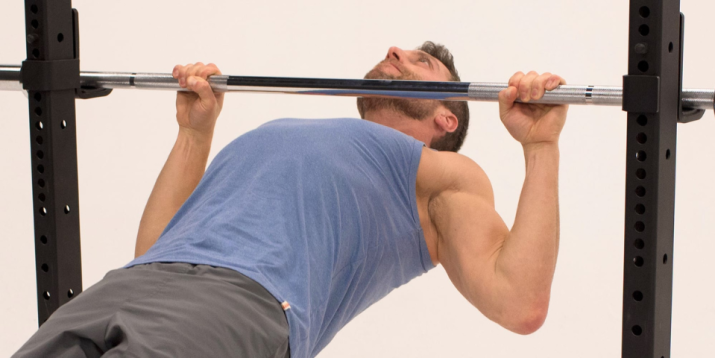
If you’re looking for a bodyweight move that hits all the major muscles in your back — plus your shoulders and biceps, too — you can’t go wrong with the inverted row.
Here, we’ll show you how to perform this staple back-building exercise.
Inverted Row: Step-by-Step Instructions

- Secure a barbell in a Smith machine or power rack at waist height, and lie face-up on the floor beneath it. The bar should be lined up directly above your chest and should not move.
- Grab the bar with an overhand grip that’s slightly wider than shoulder width, and hang with your arms fully extended. Your body should form a straight line from your head to your heels, which can be together or hip-width apart.
- Engage your core and pull your chest to the bar as you keep your shoulders back and squeeze your shoulder blades together.
- Pause, and slowly lower yourself back to the starting position.
Inverted Row Benefits
Here are just a handful of reasons to incorporate this bodyweight move into your routine.
1. Strengthens your upper back and shoulders
If you want a shapely, well-rounded physique, you can’t neglect the muscles on the back of your body. These include the lats, traps, rear delts, and rhomboids, among others.
Aesthetics aside, strengthening your upper back and shoulders improves your posture, while balancing out the muscles on the front of your body (namely, chest and anterior deltoids), says Brian Schwabe, D.P.T., C.S.C.S., board-certified sports physical therapist.
2. Helps you progress your pull-ups
To get better at pull-ups (or log your first unassisted rep), you need to incorporate pulling movements into your strength routine. But you don’t want to overdo the one motion.
“Other exercises like the inverted row add variety to the program… and reduce [the] risk of overuse injuries,” says Blake Dircksen, D.P.T., C.S.C.S.
Inverted rows recruit many of the same muscle groups as pull-ups (more on those later).
The primary difference between the two exercises lies in their orientations: The inverted row is a horizontal pulling exercise, while the pull-up is a vertical pulling exercise, Schwabe says.
3. Modifies easily
The inverted row is a cinch to modify according to your ability and your chosen set-and-rep scheme.
Simply step your feet backward or forward (or elevate them!) to change your body angle — and the difficulty of the exercise.
“The more horizontal you are, the tougher the exercise will be. The more vertical you are, the easier,” Dircksen says.
Inverted Row: Precautions
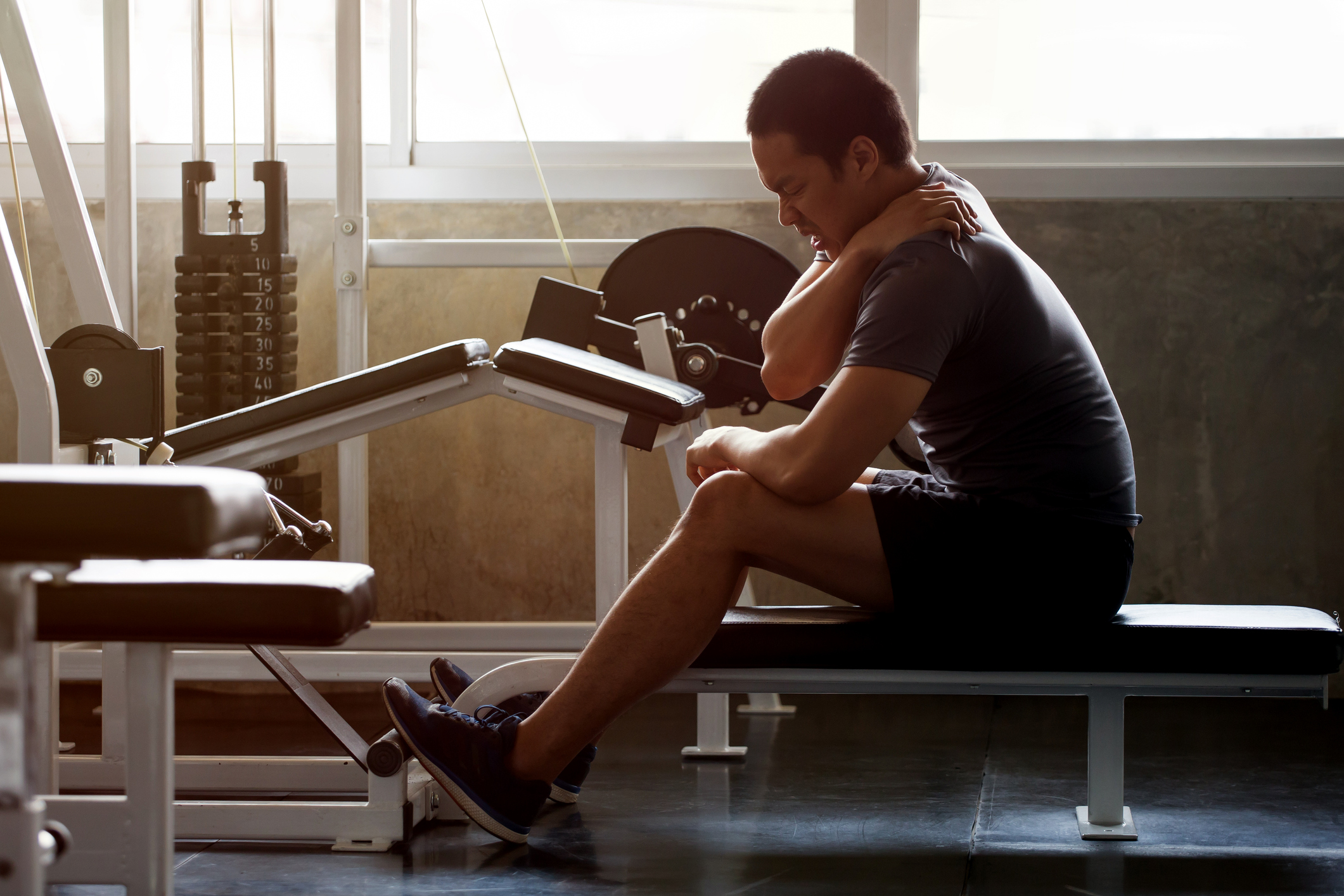
The inverted row is pretty straightforward, but there are some risks and common mistakes worth noting.
Make sure the bar is stable
To avoid toppling backwards (ouch!), make sure the bar or suspension trainer you’re using is secure and strong enough to handle your weight, Dircksen says.
Don’t stick out your chin
According to Schwabe, many people stick out their chin as they finish the pull, which can cause neck discomfort and pain.
Keep your neck neutral while you row; if you can’t finish the pull without sticking out your chin, adjust your body angle more vertically.
A weak core could give you trouble
If you lack core strength or experience pain while arching your back, inverted rows could pose problems, Schwabe says.
If inverted rows cause any discomfort, modify them by bringing your feet closer to your butt or try other variations until you’re ready for the real deal.
Inverted Row: Muscles Worked
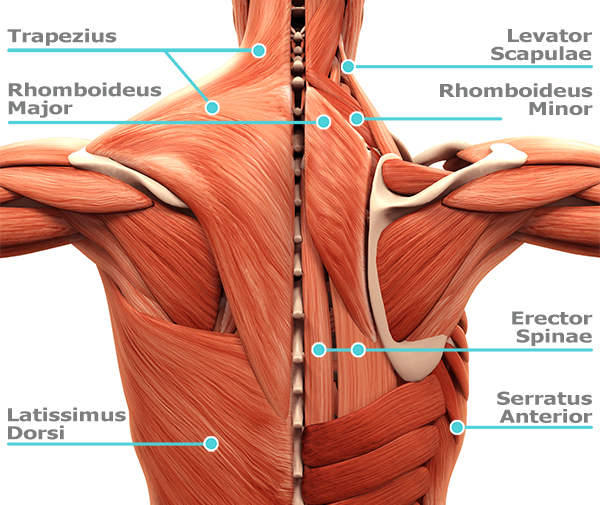
The inverted row recruits an impressive number of big muscle groups, all of which play a key role in everyday tasks like opening heavy doors, or carrying groceries and luggage.
Latissimus dorsi
You may know these large, fan-shaped muscles on the sides of your back by their abbreviated name, “lats.”
Your lats have many functions, but in the inverted row, they help bring your arms back, Schwabe says.
Trapezius
Your “traps” are a kite-shaped muscle that spans from your neck to the middle of your back and out toward your shoulders.
It helps to pull your shoulder blades (scapulae) in a number of directions, chiefly backward in the case of the inverted row.
Rhomboids
The rhomboids are a pair of muscles underneath your traps that help to draw your shoulder blades together as your row yourself toward the bar.
Rear deltoids
Your posterior, or rear, deltoids are one of three distinct heads that comprise each shoulder.
While the anterior (front) deltoids help you lift and press objects, and the lateral (side) deltoids help you raise your arms out to the sides, the posterior deltoids help you pull weight toward your body.
During the inverted row, your posterior delts team up with your lats to extend your arms backward.
Biceps
The biceps (or, rather, the biceps brachii) is a two-headed muscle on the front of the upper arm.
As with any upper-body pulling exercise, this muscle helps bend your elbow as you pull yourself to the bar.
Inverted Row: Alternative Moves
If you don’t have access to a barbell and rack or a suspension trainer, you can still simulate many of the benefits of inverted rows with these alternatives.
1. Dumbbell bent-over row
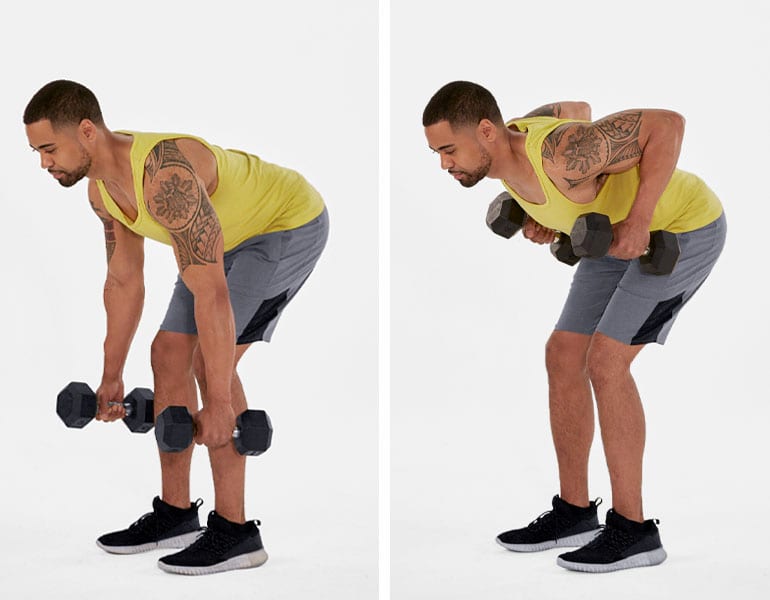
Whether you do these with one arm or two, dumbbell bent-over rows will challenge your upper and middle back muscles, shoulders, and biceps.
2. Dumbbell pullover

You only need a single dumbbell to strengthen your lats and core with the dumbbell pullover.
3. Renegade row

The renegade row targets your upper back and lats, along with your core and shoulder muscles.
4. Superman lat pull
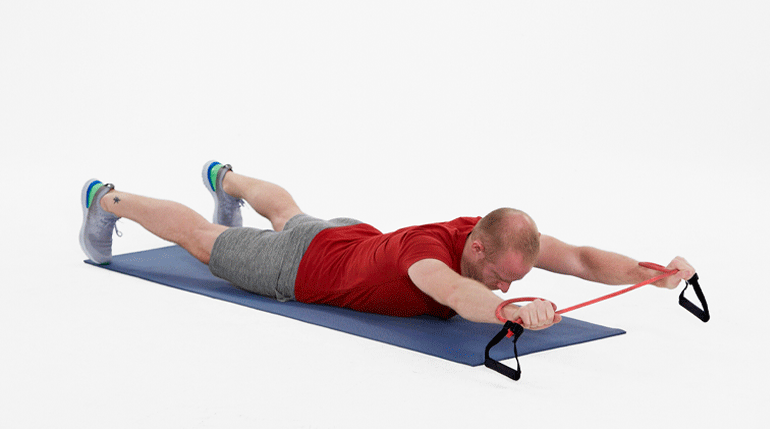
Grab a resistance band for this floor exercise that strengthens your entire back.
5. Chest-supported dumbbell row

Hit your lats, upper back, shoulders, and biceps with this bench-supported row variation.
